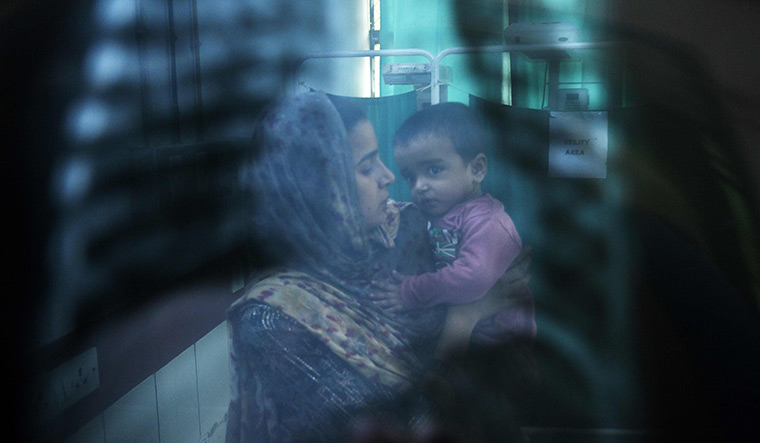In 2024, as we enter an election year, it is worth noting how the government performed in various areas, most importantly in the crucial area of public health. After the devastating impact of Covid for three years from 2020 to 2022, healthcare has taken center stage in terms of priorities for governments across the world. However, in India, various issues ranging from the budget allocated for health to the implementation of various policies on the ground, the situation continues to remain dismal, say experts.
One of the key issues with the health sector in India has been the low investment in primary healthcare, which encompasses the treatment of common health issues, providing essential drugs, maternal and child care, immunization, and other preventive measures. The lack of public healthcare infrastructure has led people to use private health services more, increasing the financial burden on citizens. Assuring free, comprehensive primary care is a key objective of the National Health Policy as it is effective primary healthcare that can prevent or pre-empt the occurrence of more serious health issues, thereby improving overall health outcomes.
Here are three essential areas that must be addressed:
Performance of PM-JAY - Pradhan Mantri Jan Arogya Yojana under Ayushman Bharat
Affordable healthcare is one of the most essential needs, and India has implemented multiple government-funded health insurance schemes, including the long-running Rashtriya Swasthya Bima Yojana (RSBY) and the current Pradhan Mantri Jan Arogya Yojana (PMJAY). While PMJAY expanded coverage and addressed some of RSBY's limitations, such as a static financial coverage cap, low enrollment, and gaps in utilization, it has not been completely successful. The PM-JAY, a component under Ayushman Bharat launched to provide health insurance coverage of ₹5 lakh to about 50 crore beneficiaries, has not achieved the expected reach. In a paper titled "Evolution of Government-funded health insurance for universal health coverage in India," published in The Lancet, researchers argue that PM-Jay still lags behind in crucial areas such as equity in supply and utilization, targeting vulnerable populations, outpatient coverage, and dynamic cost coverage. The inequitable supply and utilization disproportionately affect the most vulnerable groups, risking further deprivation among them. Researcher Swati Dubey from the Association for Socially Applicable Research (ASAR) in Pune writes that PMJAY's supply and utilization across geography, sex, age, social groups, and healthcare sectors are skewed. Kerala and Himachal Pradesh, with low poverty and disease burden, use more services, and males are more likely to seek care under PMJAY than females. Scheduled castes and scheduled tribes have low service utilization. "Most hospitals providing services are private. Such inequities can lead the most vulnerable populations further into deprivation due to healthcare inaccessibility," notes Dubey.
National Health Mission
In June last year, Karnataka Chief Minister Siddaramaiah took health officials to task for lapses in the implementation of the National Health Mission (NHM) program in the state. He criticised the officials for not filling vacancies of specialist doctors and the lack of essential health infrastructure, including MRI scanning machines and dialysis units, in hospitals in smaller towns. During a review meeting of the health department, he questioned the officials for not utilizing funds under the program and highlighted the acute shortage of specialist doctors, amounting to 52 percent. There was also a 31 percent shortage of MBBS doctors and an 18 percent shortage of nursing staff.
This is not the case in Karnataka alone. Questions about accountability and transparency in the National Rural Health Mission (NRHM) - which is one of the two parts of the NHM, the other being the National Urban Health Mission - have been raised in other states as well. The alleged health scam in Uttar Pradesh, centering around the misuse of funds meant for the NHM, is well-known. Since its launch, the NRHM budget has more than tripled from Rs10,040 crore in 2005-06 to Rs30,456 crore in 2011-12. However, increased allocations have done little to improve the average Indian's chances of receiving quality healthcare. According to experts, in order for the NHM to make health interventions effective, it is essential that it further strengthens the primary healthcare system in both rural and urban areas. A joint report by Niti Aayog, the Public Health Foundation of India, and IIM Ahmedabad suggests that the NHM is largely focused on providing comprehensive care to mothers and children. It has framed policies that allow for the design and implementation of programs on newborn care in an inclusive manner. However, considering the increasing burden of Non-Communicable Diseases, Climate-Sensitive Diseases, and emerging infectious diseases, the NHM should also put emphasis on these aspects, as well as on building the capacity of the public health system and allocating finances to emerging areas.
Tackling tuberculosis
India has pledged to eliminate TB by 2025, that is, by next year. However, experts believe that this goal is not only "over-ambitious" but also "unattainable." According to the World Global TB Report 2023, thirty high TB burden countries accounted for 87% of the world's TB cases in 2022, with two-thirds of the global total in eight countries: India (27%), Indonesia (10%), China (7.1%), the Philippines (7.0%), Pakistan (5.7%), Nigeria (4.5%), Bangladesh (3.6%), and the Democratic Republic of the Congo (3.0%). This data shows that India has the highest burden among these eight countries. The report also reveals that in 2022, 81% of the global number of deaths caused by TB among HIV-negative people occurred in the WHO African and South-East Asia regions, with India alone accounting for 29% of such deaths. Additionally, the WHO African and South-East Asia regions accounted for 81% of the combined total number of deaths caused by TB among people with and without HIV, with India contributing to 26% of such deaths. In 2022, three countries accounted for 42% of the estimated global number of people who developed MDR/RR-TB, namely India (27%), the Philippines (7.5%), and the Russian Federation (7.5%).



